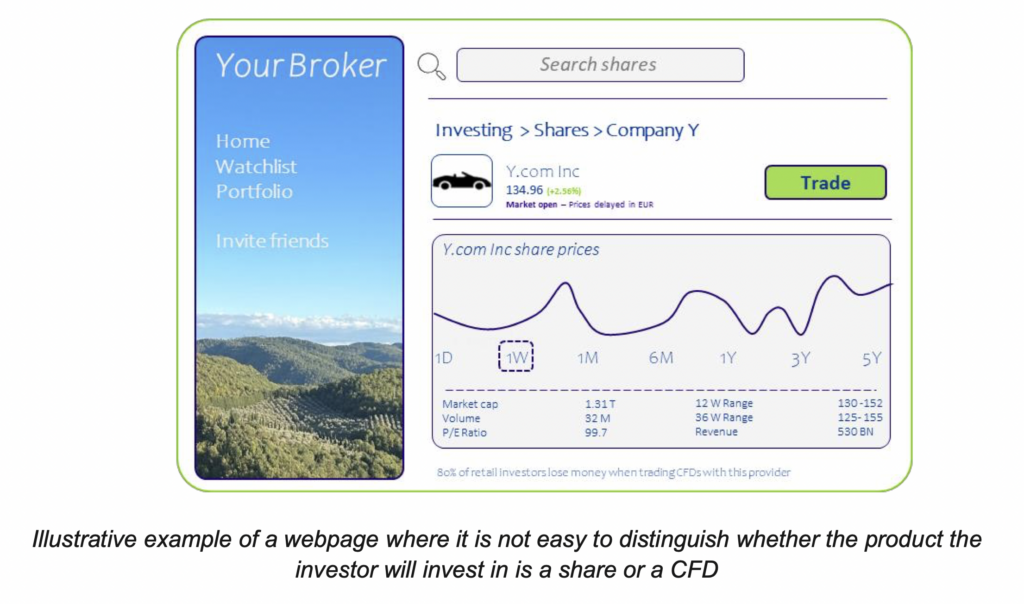
The European Securities and Markets Authority (ESMA), the EU financial market regulator and supervisor, has published discussion paper on the digitization of retail investment services and related investor protection reasons.
The regulator notes that it is important to ensure that (digital) marketing practices and advertising remain compliant with relevant regulations by ensuring that these messages are fair, clear and not misleading. One of the aspects of clear and fair presentation is the comprehensible and clear wording and presentation of the offer of investment companies, including in relation to financial instruments.
For example, companies offering contracts for difference (CFDs), structured retail products (SRPs) or exchange-traded products (ETPs) can trade these products alongside ‘standard’ stocks or bonds on the same website, listing them on the same tab or webpage, including presenting them as equal or similar alternatives.
Shares and CFDs on these shares may be marked with the same or similar code on the trading system. In such cases, it is very likely that the customer will make a mistake and buy the wrong financial instrument. In addition, the marketing communication may be structured in such a way that it does not make it easy to distinguish whether the instrument being marketed is a CFD, structured retail product or its underlying, because the advertising or communication only includes (or mostly) stock or commodity information that is the subject of a distributed product. In fact, the company may market products that are not actually offered by it.


It is necessary to balance the information and indicate all the necessary information in a clear way. When, for example, a company in its advertising uses ambiguous language such as “the ability to choose investment strategies in shares” or “access to investing in ETFs”, while not making it clear that it is advertising CFDs, then this provision of information is not clear and misleading . In this case, the customer is not able to immediately see or understand the type of product offered. Let alone understand the risks associated with such investments.
A more extreme scenario is when the content of the message suggests that less complex instruments such as shares are being offered, when in fact options or CFDs are being sold.
Another example is when an investment firm pays an affiliate/finfluencer for advertising. The firm’s investment services should then ensure that the affiliate presents the firm’s services in a fair and balanced manner. A presentation where the affiliate only extols the benefits of the company’s services without giving a fair and clear indication of any associated risks violates the requirement that information be accurate and always provide a fair and clear indication of any associated risks when any benefits of an investment or financial service are mentioned medium.
Affiliates should in any case indicate in their publication that it is as an advertisement.
ESMA is seeking stakeholder input by 14 March 2024 on recommendations on online disclosures, digital tools and marketing practices.

